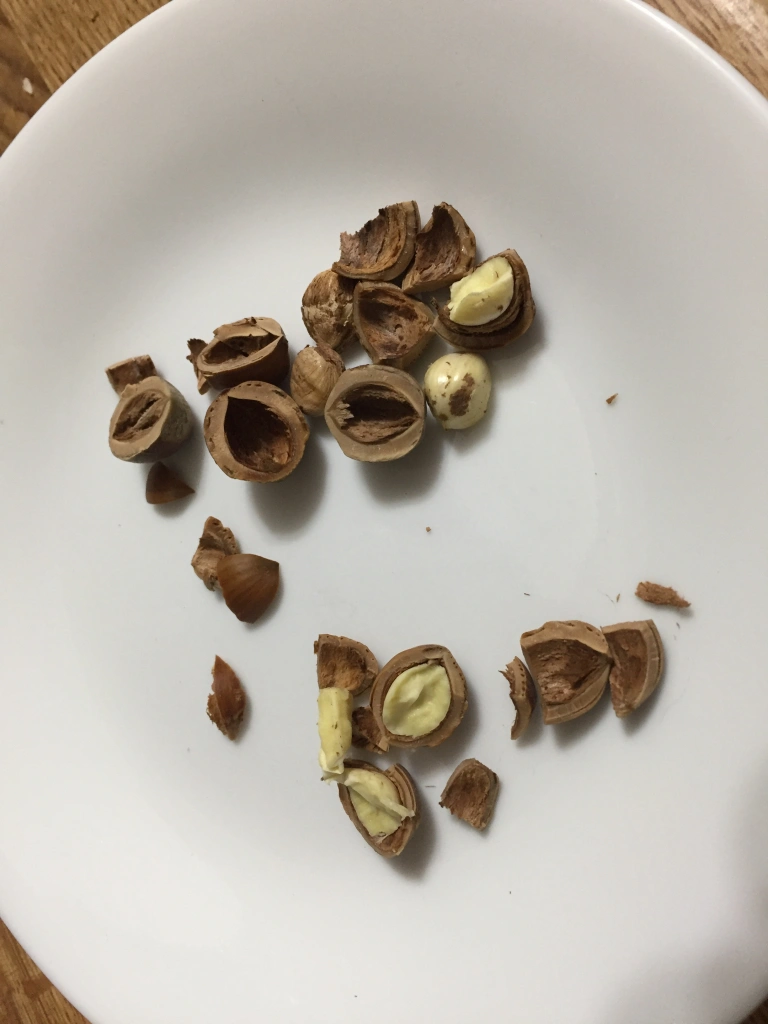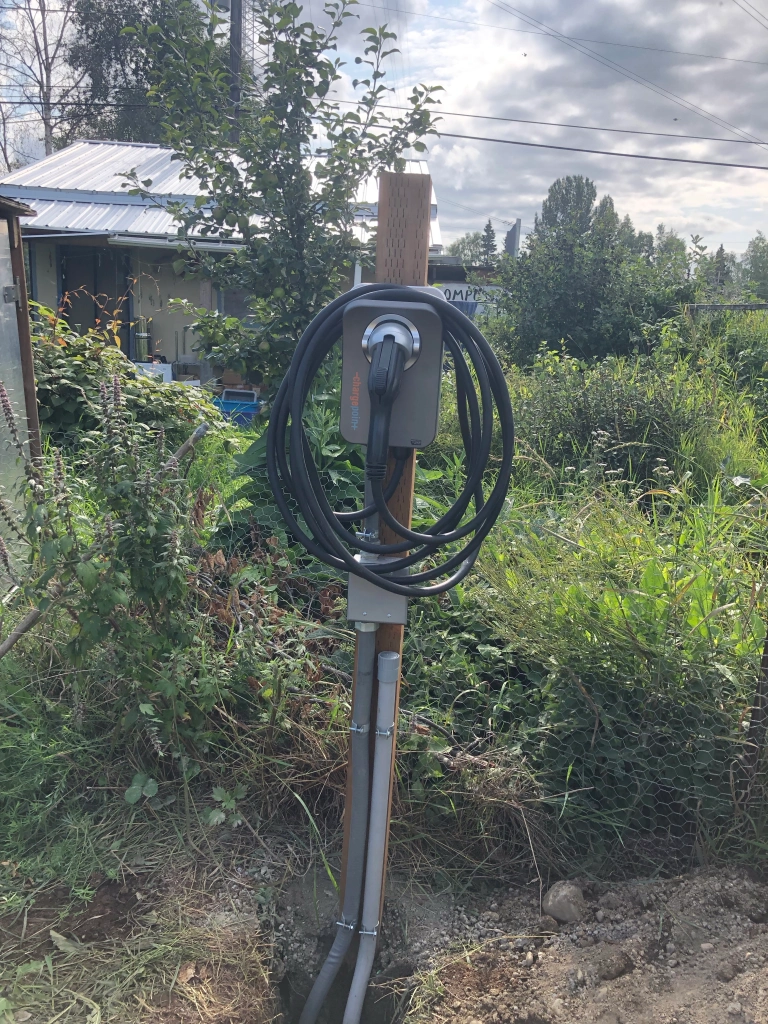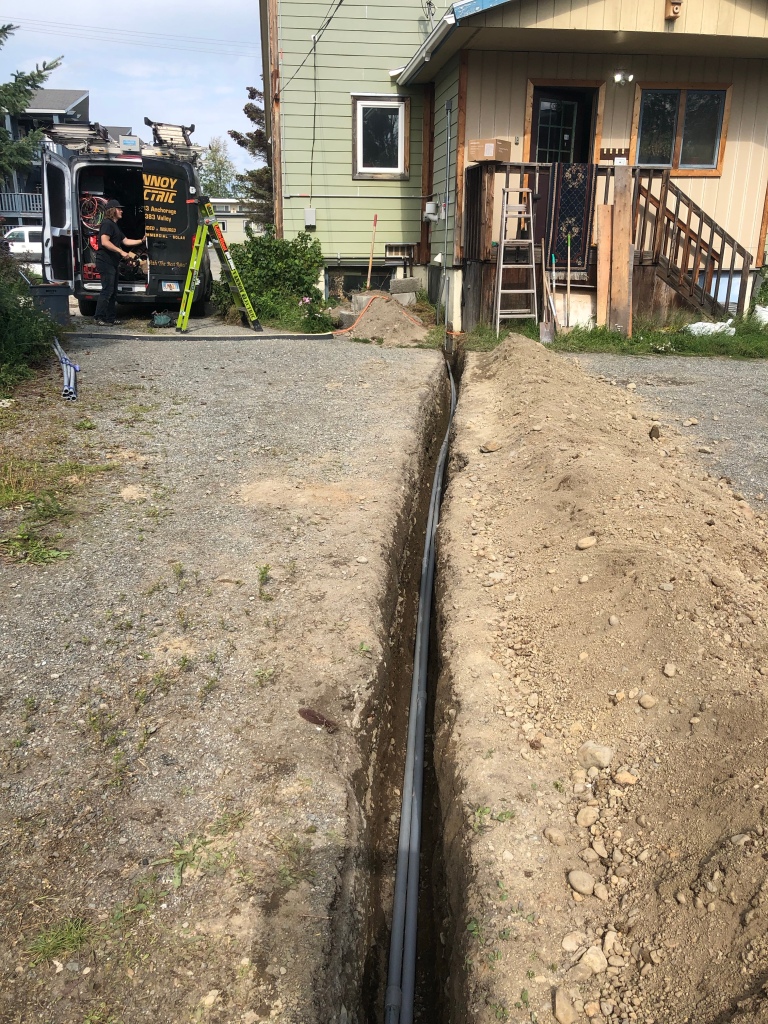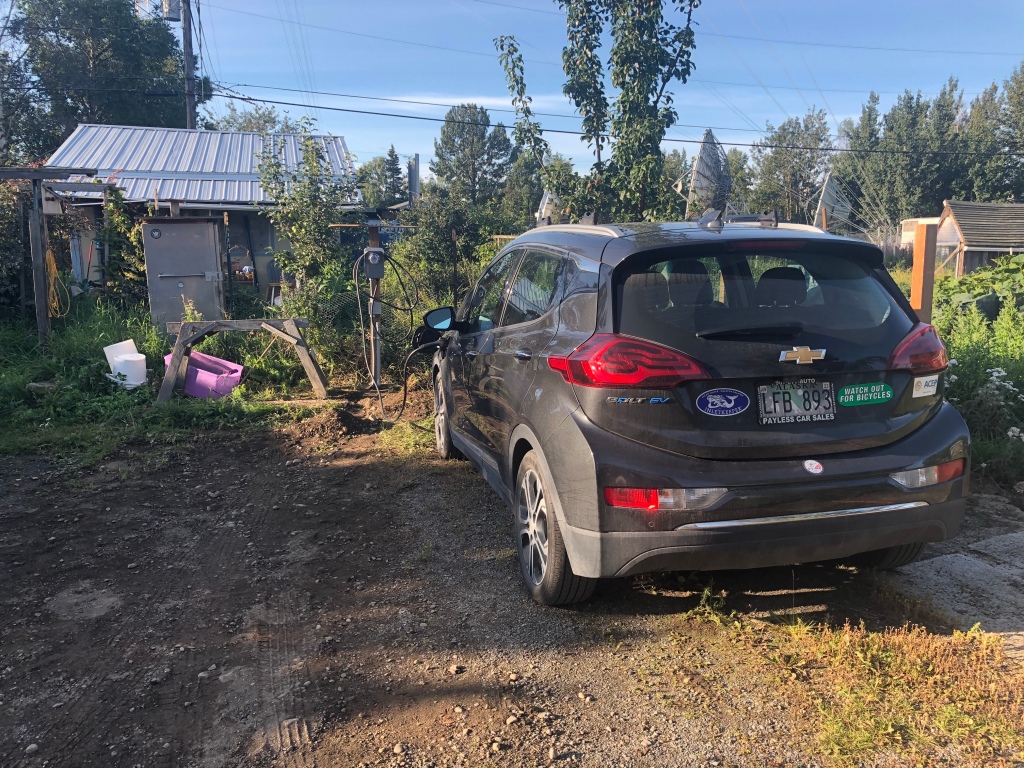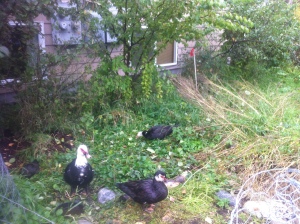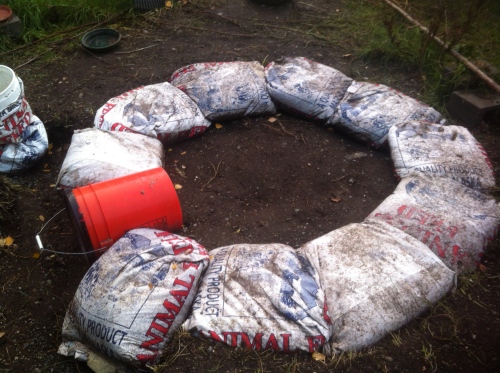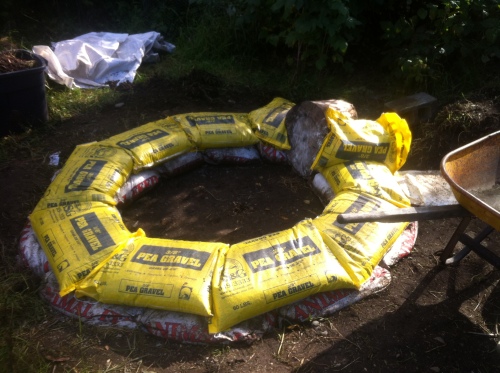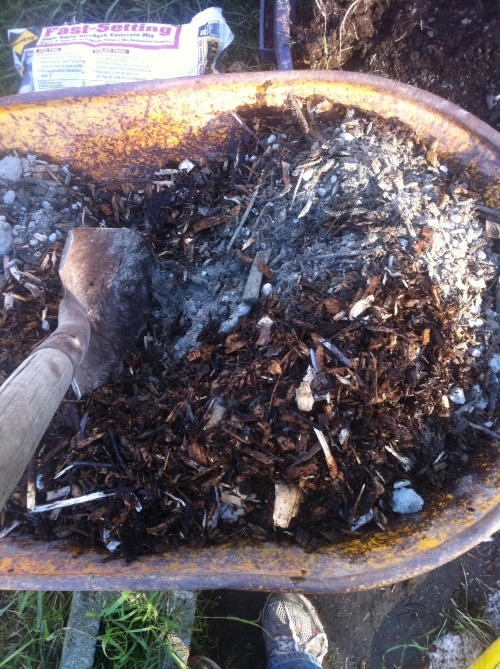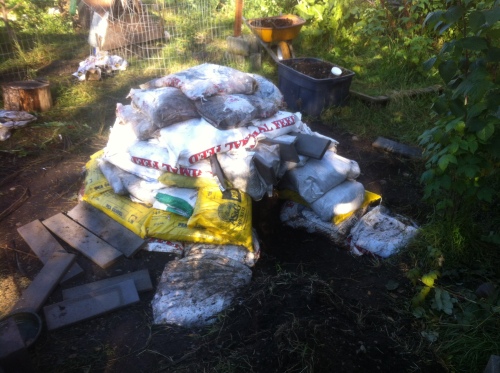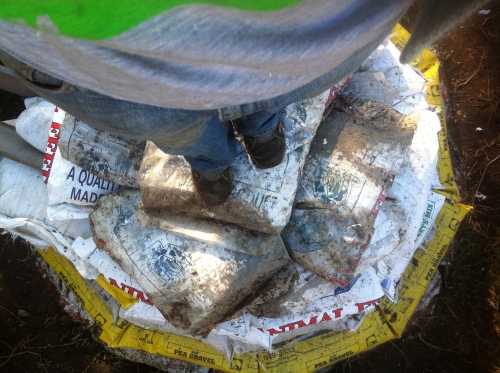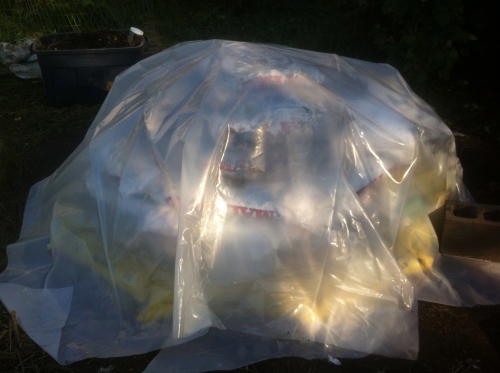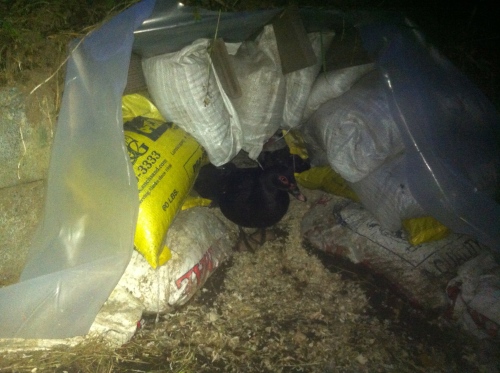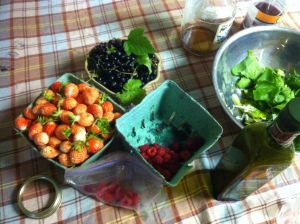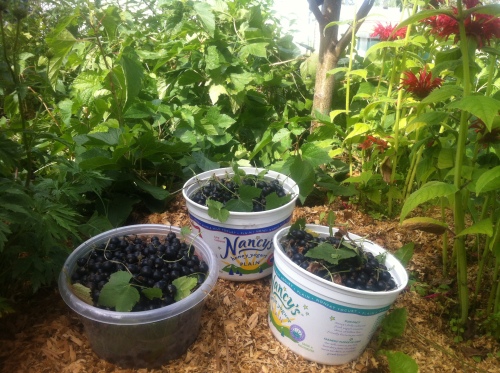Many of the fruits we rely on in the temperate regions come from one family. Believe it or not apple, pear, plum, cherry, quince, and even raspberry, service berry, aronia, mountain ash and strawberry all are in the rose family. Many of our ornamental bushes are in this family as well. As a food forest gardener seeking biodiversity, I want to plant and gather from as wide an array of genetic material as possible. Plants in the same family can concentrate pests that they are vulnerable to – fireblight, canker, insect predators such as leaf rollers, even damage from mammals such as voles, rabbits, and moose (the bark and leaves of the rose family are pretty universally tasty to these browsers – I’ve even seen a young moose angrily put up with a rose’s thorns to eat the branches, stomping the plant in between mouthfuls!) To be fair, there are benefits to family relationships too – by rights my pear and sweet cherry shouldn’t bear fruit, because neither has a pollinator tree from the same species (and different but compatible cultivar), however they do bear some fruit. I’m guessing a sour or bush cherry helps with pollinating the sweet cherry and mountain ash with the pear (and maybe there is some very limited self pollination.) In any case, here are 10 fruits that I do, or possibly could grow in my zone 4 (max of about 1000 Growing Degree Days, just over 100 Frost Free Days) Alaskan food forest – some require favorable microclimates, most are worth a try, some might be a big stretch! My observations are for growing (or trying to grow, or contemplating growing) these plants in Anchorage, Alaska.
1. Rhubarb (Polygonaceae family) – here is a standard Alaskan fruit, that of course is not biologically a fruit. great! No leaf roller, easy to propagate by splitting, early availability. Jams, pies, crumble, ice cream topping, lemonade substitute, savory sour soup ingredient – What’s not to love!
2. Currants (Grossulariaceae family) – A nice prolific bush fruit that comes in white, red and black. I love the black for their sweet, somewhat skunky taste, and their resistance to currant worm. This saw-fly larva does defoliate white and red currants, and gooseberries as well, so those are a bit more problematic in my yard. I eat them straight, freeze them, and make sweetened juice concentrate that then is easy to make into home-fermented soda. They self root where branches touch the ground, so are easy to spread around. This link is my whole post on my love of black currants 🙂
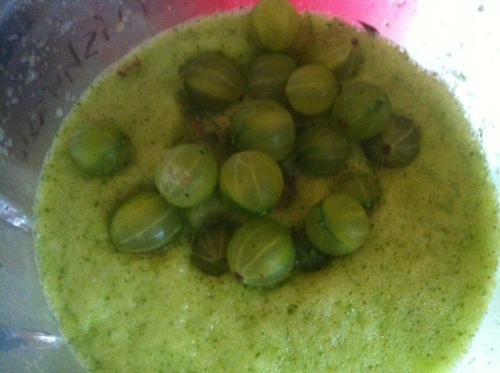
Green gooseberries subbing for limes in this mojito!
3. Hardy Kiwi (Actinidiaceae family) – a small non-fuzzy fruit with a soft kiwi taste when it finally ripens in the fall. Great for fresh eating, these grow well for me! I am hoping to root some vines so I can propagate to other parts of my yard. But don’t pick too early or they are astringent and hard!
4. Highbush Cranberry (Adoxaceae family) – this native viburnum is ubiquitous in the local birch forest under story. I love the tart taste, though the big seed is best spit out and milled out of sauces. There are other viburnums such as nannyberry that might do well here too.
5. Honey Berry (or Haskap, or edible honeysuckle – Caprifoliaceae family) – A good sub for the harder to grow blueberry, well at least in color! Honey berries are a pretty blue oval blob with a sweet and accessible taste. Unfortunately, I’ve had bad leaf rollers the last two years and they have ruined most of the berries before they can ripen, but as my plants get larger and pest populations ebb I expect great things! I do have a couple of blueberry plants (Ericaceae family) too, another non-rose family, but they limp along in my yard, and it is great to get up in the mountains and pick the much tastier wild blueberries by the gallon in the fall.
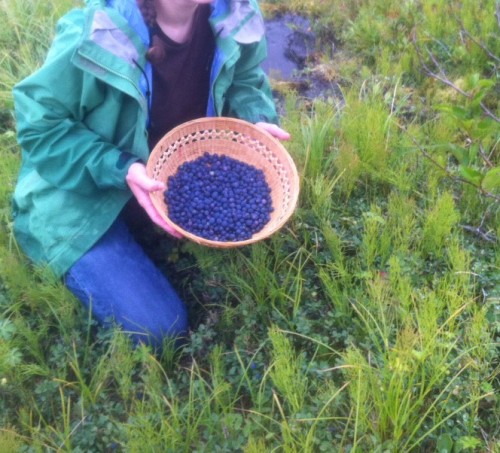
Alaskan Blueberries!!!!
6. Elderberry (Adoxaceae family – same family as highbush cranberries!) – red are native, and a better bet than blue or black to grow in your yard in Anchorage. The flowers make good fritters, or juice/soda/wine, the berries are the only thing I’ve ever made wine out of – tasted like Boones Farm, but nicely alcoholic! I’m trying a couple of domestic blue plants, but I’ve failed before with these, so may be difficult to grow this far north.
7. Mulberry (Moraceae family) – probably require more Growing Degree Days than we have, but global warming/microclimates might help! I planted one from St Lawrence Nurseries this year, we’ll see if it makes it through the winter and does anything fruitful in the future!

A male Sea Buckthorn in search of a female!
8. Elaeagnaceae family – Goumi, russian olive, Sea buckthorn, etc – Sea Buckthorn definitely fruits here, and tastes a bit like tang, or Hawaiian passion fruit orange juice. Yum! Russian olive is widely sold here as an ornamental, but mine died. Other members of this family might work!
9. Wolf or Goji berry ( Lycium family) antioxidant rich, faddish ‘super’ food – for what that’s worth. Hardy to zone 5, some maybe to 3 – but do we have a long enough season? Maybe worth a try!
10. Pawpaw (Annonaceae family) Temperate member of an otherwise tropical family. A large, native fruit depended upon by early inhabitants of the eastern US. Nutritious. I’ve never tried it. Low water content like a banana. Needs water and probably way more Frost Free Days and Growing Degree Days than we have in Anchorage…but I can dream because, according to the internet, Pawpaws have a creamy, custard-like flesh with a complex combination of tropical fruit flavors. But it is on my list to put in a tree and see…someday, because this is a stretch!
I also dream of persimmon and various nuts (chestnuts, heart nuts, hardy hickory) that would be serious experiments. I have some hardy hazelnuts that grow well, and even have male and female flowers, but so far have failed to set any nuts. One of my problems is that I have an urban yard and can only experiment with a couple of trees in most cases. For plants on the very edge of being in acceptable growing conditions, one would need to plant a huge number of genetically distinct plants to roll the dice on finding a collection of genes that might be adapted to our conditions. What crazy fruits or other perennials have worked for you in the far north?? Let’s learn from each other!


